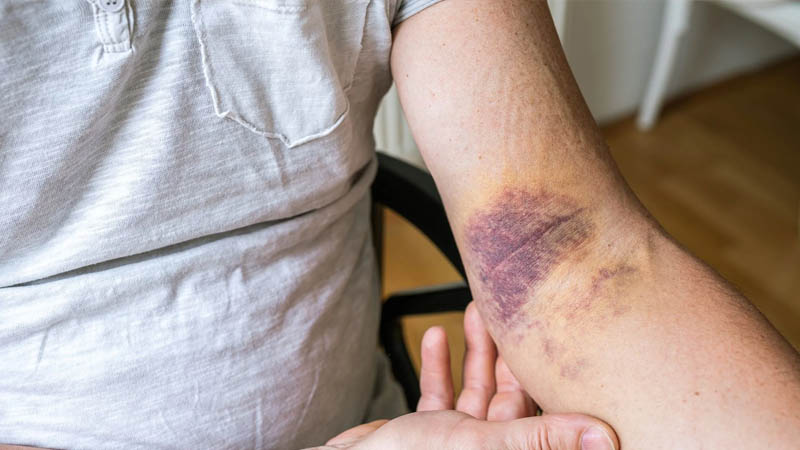A leading cancer charity is urging the public to pay close attention to unexplained bruising and other subtle symptoms that could be early indicators of blood cancer. Blood Cancer UK has issued a call for increased awareness, emphasising that symptoms can vary widely depending on the type, whether it’s leukaemia, lymphoma, myeloma, myelodysplastic syndromes (MDS), myeloproliferative neoplasms (MPN), or others.
“Symptoms vary depending on the type of blood cancer, whether it’s leukaemia, lymphoma, myeloma, MDS, MPN or any other blood cancer,” the charity stated.
Common symptoms to watch for include:
- Drenching night sweats
- Persistent, recurrent, or severe infections
- Unexplained fever (100.4°F/38°C or higher)
- Itchy or unexplained skin rashes
- Bone, joint, or abdominal pain
- Fatigue that doesn’t improve with rest
- Pallor (paleness)
- Unexplained weight loss
- Bruising or bleeding without a clear cause
- Lumps or swellings
- Shortness of breath
One key symptom—unexplained bruising—is often overlooked or mistaken for minor injuries. Blood Cancer UK explains that bruises typically begin as red marks and darken over time, and are usually tender to the touch. The charity emphasises that these bruises may signal a low platelet count, which impairs blood clotting and can result in bleeding beneath the skin.
More: Doctor Warns Skipping Breakfast and Dinner Raises Heart Attack Risk Significantly
More: “Eat Mostly Vegan, Plus a Little Fish”: Cutting Back on This One Food May Help You Live to 100
“On black and brown skin, bruises may be difficult to see initially, but as they develop, they show up as darker than the skin around them,” the charity warns. In some cases, what looks like a rash could actually be small clusters of bruises known as petechiae or purpura. These may appear as red or purple on lighter skin, and as purple or dark patches on black or brown skin.

Additional signs include bleeding from the gums or nose, prolonged bleeding from small cuts, heavy menstrual bleeding, or blood in urine or stool. In rare cases, internal bleeding, such as in the brain, can result in severe neurological symptoms.
Pallor is another common sign, though it presents differently across skin tones. While it may be more visible in individuals with lighter complexions, those with black or brown skin might notice a greyish hue or paler than usual palms, lips, or nail beds.
“In all skin tones, pallor can be seen by pulling down the lower eyelid. The inside is normally dark pink or red, but if it’s pale pink or white, it’s a sign of pallor,” they explained.
Some aggressive forms of blood cancer, like acute myeloid leukaemia (AML), can cause sudden health deterioration. Known as leukostasis or blast crisis, symptoms may include vomiting, seizures, breathing difficulties, visual changes, confusion, and even loss of muscle control.
More: Experts Warn Liver Lovers to Cut Back as Popular Food Could Weaken Your Bones
More: “Doctors Aren’t Trying to Hide It from You” GP Reveals 3 Surprising Reasons Your Cough Won’t Go Away
Blood Cancer UK stresses the importance of seeking medical attention without delay. “If you have just one symptom that you can’t explain, book an appointment with your GP,” they urged. “If you suddenly feel very unwell, get medical help straight away by calling 999 or going to A&E.”
For more guidance, the charity offers a Support Service to help individuals navigate the next steps, including what to expect from the NHS.
You Might Also Like:
- Blake Lively speaks on violence against women amid Justin Baldoni feud
- Kate Middleton Reportedly Forced to Step Back from Key Role on Behalf of King Charles
- Trump’s Approval Rating Just Fell Below ‘Worst President in History’ — Even Biden Beats Him Now!
- Unexplained Bruising Could Be a Warning Sign of Blood Cancer, Charity Warns
- 12-Year-Old Girl Tied to Bed, Fed Cat Food by Mother and Grandmother

